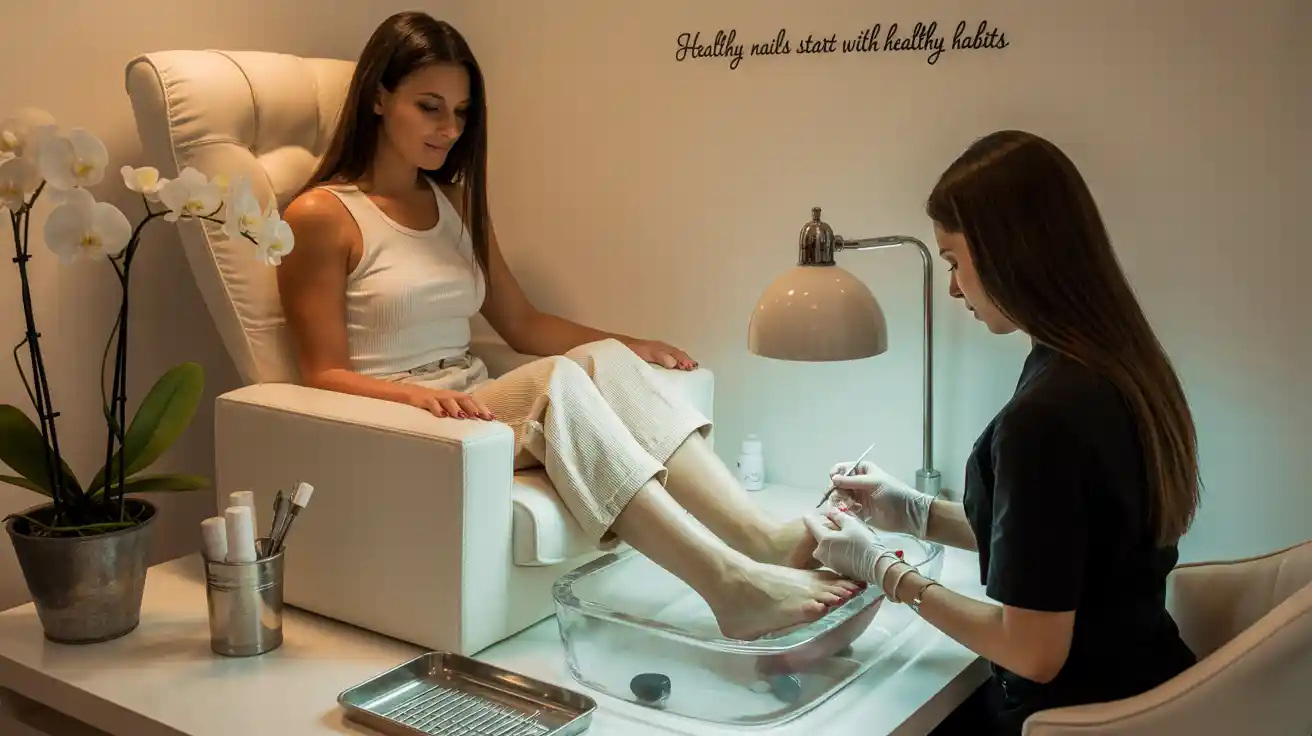A fresh pedicure can instantly boost your mood—especially when sandal season hits. Whether it’s part of your regular self-care ritual or a once-in-a-while treat, there’s something satisfying about seeing your feet looking smooth, polished, and pampered. But before you dip your toes into that foot spa, there’s one common pedicure practice that dermatologists say you should absolutely avoid.
According to Dr. Shari Lipner, M.D., Ph.D., and Assistant Professor of Dermatology at Weill Cornell Medicine, the biggest mistake people make during a pedicure is allowing the nail technician to trim or aggressively push back their cuticles.
Why You Should Leave Your Cuticles Alone
“It’s a widespread misconception that cuticles should be cut or pushed back,” Dr. Lipner explains. “But the cuticle serves an important purpose—it protects the nail matrix, or the base of the nail, from infection. When you remove or disturb the cuticle, you break that seal and leave your nail bed vulnerable to bacteria and fungi.”
In fact, if you’re prone to skin infections or have conditions like psoriasis, extra caution is essential. “For individuals with psoriasis, the skin and nails are already more delicate. A rough pedicure can worsen symptoms or trigger flare-ups,” says Dr. Lipner. “And if you already have an active infection, you should absolutely skip the pedicure altogether. It can not only aggravate the infection but potentially spread it.”
Safe Pedicures Start With a Clean Salon
Dr. Lipner emphasizes the importance of choosing a licensed salon that follows strict hygiene protocols. That means sterilized tools, clean foot baths, and technicians who understand how to work gently with sensitive skin and nails. “Don’t be afraid to ask about their sanitation procedures,” she says. “It’s your health on the line.”
Can Pedicures Improve Nail Health?
While pedicures aren’t a treatment for nail diseases, they can help manage certain conditions. “People with thick nails from trauma or repeated friction can benefit from professional thinning during a pedicure,” Dr. Lipner explains.
That said, pedicures are not a cure-all. In fact, regular polish and especially gel polish can sometimes mask serious nail problems. “If someone is always wearing polish, they may not notice a nail disease developing underneath,” she says. One condition that can easily be missed is nail melanoma, which typically appears as a dark streak in the nail. “It’s critical to examine your bare nails between salon visits,” Dr. Lipner advises.
The Problem With Gel and Acrylic Removal
Celebrity manicurist Julie Kandalec—who has worked with stars like Emily Blunt, Jessica Chastain, and Connie Britton—echoes Dr. Lipner’s concerns, especially when it comes to removing gel polish or press-on nails. “One of the worst things you can do to your nails is peel them off or scrape them off before soaking them properly,” Kandalec tells Parade. “Doing this can cause months of damage to the nail plate.”

She recommends a minimum of 15 minutes of soaking when removing enhancements like gel, acrylic, or press-ons. “It sounds like a long time, but trust me—it’s necessary,” she says. If you rush the process, not only can you weaken your nails, but any future enhancements may not adhere properly, leading to lifting and more long-term damage.
How to Protect Your Nails and Feet
Here are some pro-approved tips to keep in mind the next time you get a pedicure:
- Say no to cuticle trimming or pushing. Ask your nail tech to leave the cuticles alone or simply hydrate them instead.
- Inspect your nails regularly. Between pedicures, take a break from polish to check for changes in color, shape, or texture.
- Choose clean, licensed salons. Look for places that sterilize tools and follow safe procedures.
- Avoid pedicures if you have an infection. Open wounds or fungal infections can worsen during a pedicure.
- Don’t peel off polish or enhancements. Soak them properly to avoid long-term damage.
Bottom Line
Pedicures are a fun and relaxing way to care for your feet—but they shouldn’t come at the cost of your nail health. The next time you’re in the salon chair, remember that less is often more. Skip the cuticle trimming, inspect your nails between visits, and always listen to what your body—and your dermatologist—are telling you.




One thought on “The One Thing You Should Never Do During a Pedicure, According to a Dermatologist”